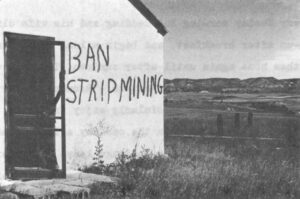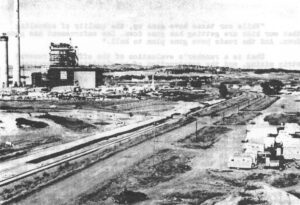Ten thousand independent oilmen are presently operating in the United States. The high price of oil and gas will probably increase that total by four or five thousand during the next ten years. These wildcatters range in degree of success and available assets from men like Jake Hamon and Monty Moncrief in office suites of Dallas and Fort Worth down to the operators of “stripper” wells in west Texas. Not all independents operate primarily in the Lone Star state, but most do. And the business has become fun again, because it is profitable.
Today more than one third of domestic oil and gas production comes from Texas. The state has eight thousand established fields, and almost two hundred thousand producing wells. Three and a half million barrels of oil are pumped out of Texas every day — an impressive figure when compared to the output of any oil and gas-producing nation. Yet production in Texas could be much greater. Exploration has increased, but not in any reasonable proportion to the rise in the price of crude oil. And certainly not in proportion to the rise in profits.
Oilmen in Texas and elsewhere complain of so-called punitive legislation aimed at windfall profits made by the oil, industry in the last eighteen months. The most obvious blow to the industry is the proposed scrapping of the oil depletion allowance (Under present law, oilmen may deduct twenty-two and one half per cent of their net income from oil and gas production, up to fifty per cent of their gross). They argue that for the past fifteen years the industry has failed to meet its capital needs, and that profits rose only five per cent a year for the five years preceding 1973. That year the price of oil tripled.
The loss of depletion would hurt the independents much more than it would the major oil companies, but a well-run independent outfit is still highly profitable today, with or without depletion. Oilmen in Texas are making money in what is the first real oil boom in years.
With less than seven per cent of the world’s population, the United States uses thirty per cent of the world’s energy. The consumption of oil in the United States is about seventeen million barrels a day, or six million more barrels than we produce.
Spokesmen for the oil industry insist that the majors and independents are prepared to spend much more on exploration, if certain incentives are provided. The fact is that the industry has for some time been conducting its own unofficial, low-level form of strike. The majors have shown a distinct disinterest in domestic exploratory wells, and the independents have until recently, been dragging their feet in the development of gas wells.
Today much of Texas’ hydrocarbon boom is in the production of gas, which brings an increasingly higher price. Before, gas was not considered valuable enough to justify the exceptionally deep wells required to tap the reservoirs. Federal regulation of the price of natural gas transported across state boundaries acted to discourage exploration, and development of existing wells. But the price of gas rose inside Texas itself, spurring new exploration. If the price ceiling on well-head gas for interstate transmission rises further, gas will equal oil as the source of a new boom in Texas.
The industry wants no government control at all of the price of natural gas. The President has the power to decontrol the price of oil, but not of gas. The industry has been fighting for de-control of the price of natural gas for interstate commerce for more than two decades, spending a great deal of money, and often becoming involved in unsavory practices. An example is the case of attempted bribery in 1956 of a senator by an industry lobbyist during the debate on natural gap, which forced President Eisenhower to veto a bill de-controlling the price of gas.
The industry maintains the most pervasive and sophisticated lobbying group in Washington, which has its own list of “road-blocks” to increased domestic drilling to meet our internal energy needs. These include the low price of natural gas for interstate transmission; the reduction or abolition .of the depletion allowance; the moratorium on drilling off the California coast at Santa Barbara; the small size of offshore oil leases in the Gulf of Mexico, and the delay in offering those leases in auction; opposition by environmentalists to drilling for oil, and to the construction of refineries; and the long delay in the construction of the pipeline in Alaska.
The cost of drilling has risen dramatically in the last eighteen months, but again not in proportion to the rise in the price of crude oil. General inflation, and a shortage of steel, have been the main factors. The price of oil is now more than sufficient to encourage more exploration, and to bring the majors back into the domestic search for oil and gas. For years most of the majors’ efforts have been carried on abroad. The nationalization of Arab fields and refineries, and the loss of tax credits due to a less beneficial pricing system there, are added incentives.
In spite of the majors’ policy of overseas production, these $1.25 per thousand cubic feet, and kept inching up.
Pitts’ method is to drill around the edges of old oil and gas producing formations, once considered played out, He drills much deeper than was previously done, locating the untapped gas. The method proved so successful that Pitts brought in more than one hundred wells during his first eighteen months of employing this method.
Pitts doesn’t limit his activity to Texas. He and his associates participated in a study of the offshore regions of the eastern seaboard, and hope to eventually prospect in the Atlantic Ocean. Pitts also believes that abundant gas supplies lie deep beneath the mountains of Appalachia, where he has leased many thousands of acres.
Perhaps the most interesting project Pitts plans is drilling the old Pennsylvania oil pools with his outer-edge method. These Pennsylvania formations represent America’s original oil fields, once the dominant supply of the Western world.
Next month we’ll take a look at a marginal oil producer, the operator of old stripper wells in Albany, Texas.
Received in New York on January 16, 1975.
©1974 James Conaway
James Conaway, a freelance writer, is an Alicia Patterson Foundation award winner. This article may be published with credit to Mr. Conaway and the Alicia Patterson Foundation.




